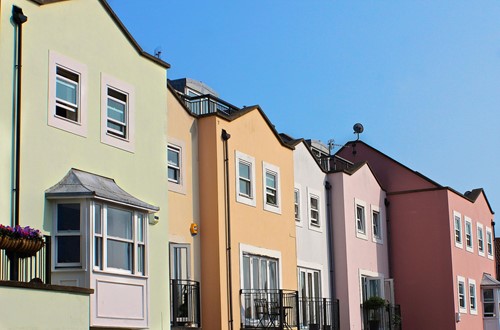
A common sight in historic metropolitan areas, row houses are an iconic example of multifamily housing structures. As their name suggests, row houses are oriented next to one another “in a row” and without a space in between. Each home is separate from the others, but the structure or building often shares a homeowners’ association or similar governing body.
Along with these key factors, there are plenty of characteristics that make row houses special.
Row houses can typically be identified by the following features:
In addition to aesthetic and structural elements, row houses often line entire streets or city blocks. In the United States, you’re likely to find row house neighborhoods in major urban centers with prominent historic districts, such as San Francisco, New York City, Boston and Baltimore.
While following the characteristics listed above, row house construction also falls into some basic architectural style categories. The main architectural styles of row houses include:
Row houses are popular among many homeowners for their historical significance and unique architectural features. Many cities strive to maintain the integrity and appearance of row houses, so residents can continue to enjoy their aesthetic and charm for decades to come.

During her 25 years in the South Florida non-profit sector, helping others was always at the core of Danay's professional career. As a Realtor, she now uses her extensive background in client relations, financial management, and sales to help her clients in finding their dream home.
Whether buying or selling, what matters most to her is honest communication, extreme loyalty to her clients, and a direct, hands-on approach.
Raised in Miami, she has a personal connection to the local community and has extensive knowledge of the various cities and neighborhoods across the local market. Whether a seller or buyer, you will appreciate her attention to detail, negotiation skills, and motivation.
As a homeowner herself, she recognizes and values the trust clients place in realtors and she is dedicated to working tirelessly on behalf of her clients, making the process stress-free and exceeding their expectations.
Certifications:
Residential Real Estate Probate Specialist